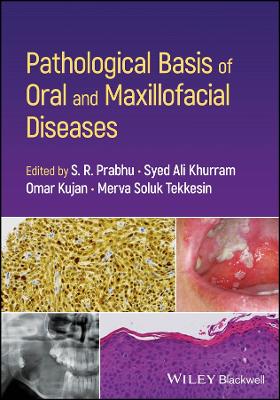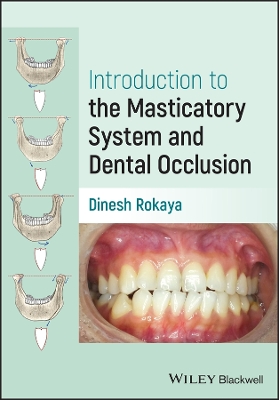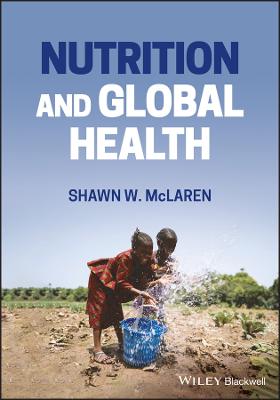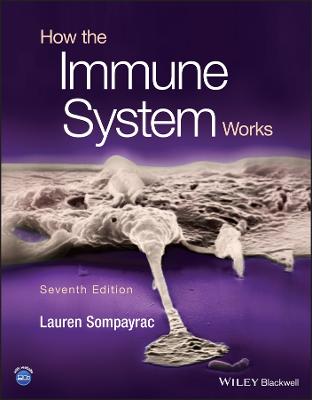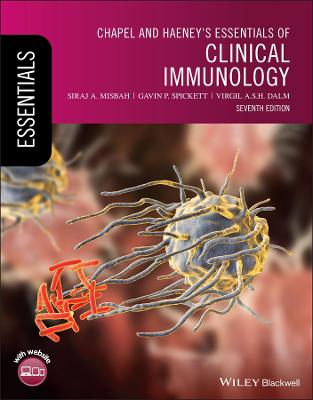Pressure Oscillation in Biomedical Diagnostics and Therapy
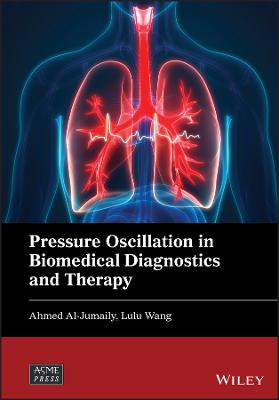 -15%
portes grátis
-15%
portes grátis
Pressure Oscillation in Biomedical Diagnostics and Therapy
Al-Jumaily, Ahmed; Wang, Lulu
John Wiley & Sons Inc
07/2022
320
Dura
Inglês
9781119265849
15 a 20 dias
712
Descrição não disponível.
CHAPTER I PRESSURE WAVES FOR DIAGNOSTICS AND THERAPY
1.1 INTRODUCTION
1.2 SIGNIFICANCE OF BIOLOGICAL SYSTEM MODELLING
1.3 WAVE EQUATION
1.4 GOVERNING EQUATION
1.4.1 Assumptions
1.4.2 Derivation
1.4.3 Solution
1.5 BIFURCATION
1.6 DIAGNOSTICS AND THERAPY
1.6.1 Diagnostics Applications
1.6.2 Therapy Applications
1.7 CLOSURE
1.8 REFRENCES
PART I: DIAGNOSTICS AND IMIGING
CHAPTER II: PULSE WAVE FOR ARTERIAL DIAGNOSTICS
2.1 INTRODUCTION
2.2 CARDIOVASCULAR SYSTEM
2.2.1 Arterial System
2.2.2 Properties of Arteries
2.2.3 Arterial Stiffness (AS)
2.3 NON-INVASIVE ARTERIAL STIFFNESS DETECTION
2.3.1 Local Methods
2.3.2 Regional Methods
2.3.3 Waveform Analysis Methods
2.4 ARTERIAL MODEL DEVELOPMENT
2.5 LUMPED MODELLING OF THE AORTA AND BRACHIAL ARTERIES...
2.5.1 Input Signal
2.5.2 Wave Reflection Locations
2.5.3 Cuff-Soft Tissue -Brachial Artery Model
2.5.4 Brachial Artery Model
2.5.5 Combined Model
2.6 ARTERIAL BLOOD PRESSURE
2.6.1 Pulse Pressure
2.6.2 Mean Arterial Pressure
2.6.3 Non-invasive Blood Pressure Measurement Methods
2.6.4 Proposed Blood Pressure Measurement Method
2.7 ARTIFICIAL NEURAL NETWORK CLASSIFICATION
2.8 PULSE WAVE
2.8.1 Pulse Wave History
2.8.2 Pulse Wave Types
2.8.3 Augmentation Index
2.8.4 Pulse Wave Velocity (PWV
2.8.5 Arterial Stiffness Index
2.8.6 Cardiac Output (CO
2.8.7 Pulse Wave Analysis (PWA) Methods
2.9 MEDICAL APPLICATIONS OF PULSE WAVE ANALYSIS
2.9.1 Pulse Wave Analysis for the Early Detection of Cardiovascular Disease
2.9.2 Pulse Wave Analysis in Chronic Obstructive Pulmonary Disease
2.9.3 Pulse Wave in Traditional Chinese Medicine (TCM)
2.9.4 Pulse Wave Analysis for the Prediction of Preeclampsia
BIBLIOGRAPHY
CHAPTER III: RADIATION FORCE
3.1 INTRODUCTION
3.2 ACOUSTIC RADIATION FORCE
3.2.1 Types of Radiation Force
3.2.2 Acoustic Radiation Force History
3.2.3 Applications of Acoustic Radiation Force
3.2.4 Acoustic Radiation Force Based Elasticity Imaging Techniques
3.2.5 Commercial Implementations of Acoustic Radiation Force Based Imaging
3.3 VIBRO ACOUSTOGRAPHY
3.3.1 Soft Tissue Material Properties
3.3.2 Dynamic Radiation Force in Vibro-Acoustography
3.3.3 Acoustic Emission
3.3.4 Ultrasound Beam Forming
3.3.5 Image Formation
3.3.6 Experimental System
3.3.7 Multi-frequency Vibro-Acoustography
3.4 VIBRO-ACOUSTOGRAPHY APPLICATIONS
3.4.1 Breast Imaging Application
3.4.2 Arteries Imaging Application
3.4.3 Prostate Imaging Application
3.4.4 Other Applications
3.5 GENERAL REMARKS ON VA
3.5.1 Benefits and Limitations of VA
3.5.2 Limitations of VA
3.5.3 Comparison of Vibro-Acoustography with Pulse-echo Systems
3.5.4 Future Directions
BIBLIOGRAPHY
CHAPTER IV: HUMAN RESPIRATORY SYSTEM
4.1 INTRODUCTION
4.2 RESPIRATORY SYSTEM
4.2.1 Upper Airways
4.2.2 Lower Airways
4.3 LUNG DEVELOPMENT
4.4 GAS EXCHANGE AND CONTROL
4.5 RESPIRATORY SYSTEM MECHANICS
4.5.1 Mechanical Properties
4.5.2 Airway Resistance
4.5.3 Surface Tension
4.5.4 Elastance and Compliance
4.5.5 Impedance
4.6 RESPIRATORY SYSTEM MODELS
4.7 MEASUREMENT METHODS
4.7.1 Lung Function Tests
4.7.2 Spirometry
4.7.2 Forced Oscillation Technique
4.8 RESPIRATORY SYSTEM DISEASES
4.8.1 Obstructive Lung Diseases
4.8.2 Restrictive Lung Diseases
4.9 DIAGNOSIS OF LUNG DISEASES
4.10 RESPIRATORY DISEASES TREATMENT
4.10.1 Surfactant Therapy
4.10.2 Ventilation Treatments
4.10.3 Ventilation Techniques using Pressure Oscillations
4.10.4 High Frequency Ventilation
4.10.5 Continuous Positive Airway Pressure (CPAP) with Pressure Oscillations
4.10.6 Noisy ventilation
4.10.7 The Role of Vibration
4.11 CLOSURE
BIBLIOGRAPHY
CHAPTER V: FORCED OSCILLATION TECHNIQUE
5.1 INTRODUCTION
5.2 FORCED OSCILLATION TECHNIQUE
5.2.1 FOT Development History
5.2.2 Forced Oscillation Technique Types
5.2.3 FOT Setup
5.3 MEASUREMENT ARRANGEMENT
5.3.1 Resistance Measurement
5.3.2 Impedance Measurement Method
5.4 CLINICAL APPLICATIONS
5.4.1 FOT in Responsiveness Tests
5.4.2 FOT for Detecting Asthma Phenotypes
5.4.3 FOT in Patients Subjected to Ventilator Support
5.4.4 Monitoring of Respiratory Mechanics
5.5 CONCLUDING REMARKS
BIBLIOGRAPHY
PART TWO: LUNG THERAPIES
CHAPTER VI: OBSTRUCTIVE SLEEP APNEA
6.1 INTRODUCTION
6.2 OBSTRUCTIVE SLEEP APNEA
6.2.1 Anatomic Contributors to OSA
6.2.2 OSA Risks and Symptoms
6.2.3 OSA Diagnostic Methods
6.3 TREATMENT OPTION FOR OSA
6.4 SURGICAL TREATMENTS
6.4.1 Palatal Surgeries
6.4.2 Hypopharyngeal Procedures
6.4. 3 Other Procedures
6.5 CONTINUOUS POSITIVE AIRWAY PRESSURE
6.5.1 CPAP Principle
6.5.2 CPAP Main Components
6.5.3 Titration Pressure
6.6 OTHER FORMS OF CPAP
6.6.1 Bi-Level Positive Airway Pressure
6.6.2 Automatic Continuous Positive Airway Pressure
6.6.3 Auto Bi-Level Machines
6.6.4 Adaptive Pressure Support Servo-Ventilators
6.7 CLINICAL STUDIES
6.7.1 CPAP
6.7.2 Auto-CPAP
6.7.3 Clinical Comparison Studies of Auto CPAP and CPAP
6.8 SIDE EFFECTS WITH CPAP APPLICATIONS
6.9 SIGNIFICANCE OF PRESSURE OSCILLATION
6.9.1 Rationales
6.9.2 Pressure Oscillation
6.9.3 Pressure Oscillations Superimposed on CPAP
6.10 IMPROVEMENTS ON CPAP THERAPY
6.10.1 SIPO Modulate the Obstructed UA
6.10.2 SIPO for Saliva Stimulation
6.11 DEMONSTRATING SIPO CLINICALLY
6.11.1 Polysomnography setup
6.11.2 Saliva collection test
6.11.3 Concluding Remarks
BIBLIOGRAPHY
CHAPTER VII: PRESSURE OSCILLATIONS IN ASTHMA TREATMENT
7.1 INTRODUCTION
7.2 ASTHMA
7.2.1 Types of Asthma
7.2.2 Asthma Diagnostics
7.2.3 Asthma Treatment
7.2.3.1 Pharmacotherapy Treatments
7.2.3.2 Non-pharmacological Treatments
7.3 AIRWAY SMOOTH MUSCLES (ASM)
7.3.1 Structure of Airway Smooth Muscle
7.3.2 ASM Function in Health and Disease
7.3.3 ASM and Airway Responsiveness
7.3.4 Mechanical Properties of Airway Smooth Muscle
7.4 BREATHING DYNAMICS AND ASM
7.4.1 ASM Dynamics
7.4.2 Modelling of Airway Smooth Muscle Dynamics
7.5 LENGTH OSCILLATION BRONCHODILATION
7.5.1 Filament Sliding Model
7.5.2 Finite Duration for Length Steps
7.5.3 ASM Response
7.6 LENGTH OSCILLATION BRONCHOPROTECTION
7.6.1 Effect of Length Oscillations on ASM Reactivity and Cross-Bridge Cycling
7.6.2 Concluding Remarks
7.7 ENGINEERING PERSPECTIVES OF CONTRACTION-RELAXATION MECHANISM
7. 8. ANIMAL MODELS
7.8.1 Mouse Anatomy
7.8.2 Acute and Chronical Asthmatic Models
7.8.3 Model Limitations
7.9 MODEL SENSITIZATION
7.9.1 Sensitization Assessment
7.9.2 AHR / Plethysmography
7.9.3 ELISA (IgE)
7.9.4 BAL
7.10 SUPERIMPOSED PRESSURE OSCILLATION
7.10.1 Experimental layout
7.10.2 Nebulization System for the Drugs and Allergen
7.10.3 Pressure Oscillation Setup
7.11 IN VIVO TEST
7.11.1 Relaxation
7.11.2 Lung Resistance
7.11.3 Compliance
7.11.4 Concluding Remarks
BIBLIOGRAPHY
CHAPTER VIII: PRESSURE OSCILLATION IN NEONATAL RESPIRATORY DISEASES TREATMENT
8.1 INTRODUCTION
8.2 NEONATAL RESPIRATORY DISEASES
8.2.1 Bronchopulmonary Dysplasia
8.2.2 Pneumonia
8.2.3 Persistent Pulmonary Hypertension of the Newborn
8.2.4 Meconium Aspiration Syndrome
8.2.5 Respiratory Distress Syndrome
8.2.6 Neonatal RDS Treatments
8.2.7 Role of Pressure Oscillations
8.3 HIGH-FREQUENCY VENTILATION
8.3.1 Mechanics of High-Frequency Oscillation
8.3.2 Modalities of High-Frequency Ventilation
8.3.3 High-Frequency Oscillatory Ventilation System
8.3.4 Gas Transport During HFOV
8.3.5 Control of Gas Exchange
8.3.6 Ventilator
8.3.7 Adjusting Ventilatory Parameters
8.3.8 Noninvasive Assessment of Lung Volume
8.3.9 Weaning
8.4 NOISY VENTILATION
8.5 CONTINUOUS POSITIVE AIRWAY PRESSURE
8.5.1 Nasal CPAP
8.5.2 Bubble CPAP System
8.6 MODELLING OF BUBBLE CPAP
8.6.1 Model Formulation
8.6.2 Structural Correlation
8.6.3 Results and Discussion
8.7 CLINICAL APPLICATIONS OF PRESSURE OSCILLATIONS
8.7.1 HFOV in the Neonate and Infant
8.7.2 HFOV in the Children
8.7.3 HFOV in Adolescent and Adult
8.7.4 Clinical Benefits and Disadvantages of HFOV
8.7.5 Clinical Applications of CPAP
BIBLIOGRAPHY
1.1 INTRODUCTION
1.2 SIGNIFICANCE OF BIOLOGICAL SYSTEM MODELLING
1.3 WAVE EQUATION
1.4 GOVERNING EQUATION
1.4.1 Assumptions
1.4.2 Derivation
1.4.3 Solution
1.5 BIFURCATION
1.6 DIAGNOSTICS AND THERAPY
1.6.1 Diagnostics Applications
1.6.2 Therapy Applications
1.7 CLOSURE
1.8 REFRENCES
PART I: DIAGNOSTICS AND IMIGING
CHAPTER II: PULSE WAVE FOR ARTERIAL DIAGNOSTICS
2.1 INTRODUCTION
2.2 CARDIOVASCULAR SYSTEM
2.2.1 Arterial System
2.2.2 Properties of Arteries
2.2.3 Arterial Stiffness (AS)
2.3 NON-INVASIVE ARTERIAL STIFFNESS DETECTION
2.3.1 Local Methods
2.3.2 Regional Methods
2.3.3 Waveform Analysis Methods
2.4 ARTERIAL MODEL DEVELOPMENT
2.5 LUMPED MODELLING OF THE AORTA AND BRACHIAL ARTERIES...
2.5.1 Input Signal
2.5.2 Wave Reflection Locations
2.5.3 Cuff-Soft Tissue -Brachial Artery Model
2.5.4 Brachial Artery Model
2.5.5 Combined Model
2.6 ARTERIAL BLOOD PRESSURE
2.6.1 Pulse Pressure
2.6.2 Mean Arterial Pressure
2.6.3 Non-invasive Blood Pressure Measurement Methods
2.6.4 Proposed Blood Pressure Measurement Method
2.7 ARTIFICIAL NEURAL NETWORK CLASSIFICATION
2.8 PULSE WAVE
2.8.1 Pulse Wave History
2.8.2 Pulse Wave Types
2.8.3 Augmentation Index
2.8.4 Pulse Wave Velocity (PWV
2.8.5 Arterial Stiffness Index
2.8.6 Cardiac Output (CO
2.8.7 Pulse Wave Analysis (PWA) Methods
2.9 MEDICAL APPLICATIONS OF PULSE WAVE ANALYSIS
2.9.1 Pulse Wave Analysis for the Early Detection of Cardiovascular Disease
2.9.2 Pulse Wave Analysis in Chronic Obstructive Pulmonary Disease
2.9.3 Pulse Wave in Traditional Chinese Medicine (TCM)
2.9.4 Pulse Wave Analysis for the Prediction of Preeclampsia
BIBLIOGRAPHY
CHAPTER III: RADIATION FORCE
3.1 INTRODUCTION
3.2 ACOUSTIC RADIATION FORCE
3.2.1 Types of Radiation Force
3.2.2 Acoustic Radiation Force History
3.2.3 Applications of Acoustic Radiation Force
3.2.4 Acoustic Radiation Force Based Elasticity Imaging Techniques
3.2.5 Commercial Implementations of Acoustic Radiation Force Based Imaging
3.3 VIBRO ACOUSTOGRAPHY
3.3.1 Soft Tissue Material Properties
3.3.2 Dynamic Radiation Force in Vibro-Acoustography
3.3.3 Acoustic Emission
3.3.4 Ultrasound Beam Forming
3.3.5 Image Formation
3.3.6 Experimental System
3.3.7 Multi-frequency Vibro-Acoustography
3.4 VIBRO-ACOUSTOGRAPHY APPLICATIONS
3.4.1 Breast Imaging Application
3.4.2 Arteries Imaging Application
3.4.3 Prostate Imaging Application
3.4.4 Other Applications
3.5 GENERAL REMARKS ON VA
3.5.1 Benefits and Limitations of VA
3.5.2 Limitations of VA
3.5.3 Comparison of Vibro-Acoustography with Pulse-echo Systems
3.5.4 Future Directions
BIBLIOGRAPHY
CHAPTER IV: HUMAN RESPIRATORY SYSTEM
4.1 INTRODUCTION
4.2 RESPIRATORY SYSTEM
4.2.1 Upper Airways
4.2.2 Lower Airways
4.3 LUNG DEVELOPMENT
4.4 GAS EXCHANGE AND CONTROL
4.5 RESPIRATORY SYSTEM MECHANICS
4.5.1 Mechanical Properties
4.5.2 Airway Resistance
4.5.3 Surface Tension
4.5.4 Elastance and Compliance
4.5.5 Impedance
4.6 RESPIRATORY SYSTEM MODELS
4.7 MEASUREMENT METHODS
4.7.1 Lung Function Tests
4.7.2 Spirometry
4.7.2 Forced Oscillation Technique
4.8 RESPIRATORY SYSTEM DISEASES
4.8.1 Obstructive Lung Diseases
4.8.2 Restrictive Lung Diseases
4.9 DIAGNOSIS OF LUNG DISEASES
4.10 RESPIRATORY DISEASES TREATMENT
4.10.1 Surfactant Therapy
4.10.2 Ventilation Treatments
4.10.3 Ventilation Techniques using Pressure Oscillations
4.10.4 High Frequency Ventilation
4.10.5 Continuous Positive Airway Pressure (CPAP) with Pressure Oscillations
4.10.6 Noisy ventilation
4.10.7 The Role of Vibration
4.11 CLOSURE
BIBLIOGRAPHY
CHAPTER V: FORCED OSCILLATION TECHNIQUE
5.1 INTRODUCTION
5.2 FORCED OSCILLATION TECHNIQUE
5.2.1 FOT Development History
5.2.2 Forced Oscillation Technique Types
5.2.3 FOT Setup
5.3 MEASUREMENT ARRANGEMENT
5.3.1 Resistance Measurement
5.3.2 Impedance Measurement Method
5.4 CLINICAL APPLICATIONS
5.4.1 FOT in Responsiveness Tests
5.4.2 FOT for Detecting Asthma Phenotypes
5.4.3 FOT in Patients Subjected to Ventilator Support
5.4.4 Monitoring of Respiratory Mechanics
5.5 CONCLUDING REMARKS
BIBLIOGRAPHY
PART TWO: LUNG THERAPIES
CHAPTER VI: OBSTRUCTIVE SLEEP APNEA
6.1 INTRODUCTION
6.2 OBSTRUCTIVE SLEEP APNEA
6.2.1 Anatomic Contributors to OSA
6.2.2 OSA Risks and Symptoms
6.2.3 OSA Diagnostic Methods
6.3 TREATMENT OPTION FOR OSA
6.4 SURGICAL TREATMENTS
6.4.1 Palatal Surgeries
6.4.2 Hypopharyngeal Procedures
6.4. 3 Other Procedures
6.5 CONTINUOUS POSITIVE AIRWAY PRESSURE
6.5.1 CPAP Principle
6.5.2 CPAP Main Components
6.5.3 Titration Pressure
6.6 OTHER FORMS OF CPAP
6.6.1 Bi-Level Positive Airway Pressure
6.6.2 Automatic Continuous Positive Airway Pressure
6.6.3 Auto Bi-Level Machines
6.6.4 Adaptive Pressure Support Servo-Ventilators
6.7 CLINICAL STUDIES
6.7.1 CPAP
6.7.2 Auto-CPAP
6.7.3 Clinical Comparison Studies of Auto CPAP and CPAP
6.8 SIDE EFFECTS WITH CPAP APPLICATIONS
6.9 SIGNIFICANCE OF PRESSURE OSCILLATION
6.9.1 Rationales
6.9.2 Pressure Oscillation
6.9.3 Pressure Oscillations Superimposed on CPAP
6.10 IMPROVEMENTS ON CPAP THERAPY
6.10.1 SIPO Modulate the Obstructed UA
6.10.2 SIPO for Saliva Stimulation
6.11 DEMONSTRATING SIPO CLINICALLY
6.11.1 Polysomnography setup
6.11.2 Saliva collection test
6.11.3 Concluding Remarks
BIBLIOGRAPHY
CHAPTER VII: PRESSURE OSCILLATIONS IN ASTHMA TREATMENT
7.1 INTRODUCTION
7.2 ASTHMA
7.2.1 Types of Asthma
7.2.2 Asthma Diagnostics
7.2.3 Asthma Treatment
7.2.3.1 Pharmacotherapy Treatments
7.2.3.2 Non-pharmacological Treatments
7.3 AIRWAY SMOOTH MUSCLES (ASM)
7.3.1 Structure of Airway Smooth Muscle
7.3.2 ASM Function in Health and Disease
7.3.3 ASM and Airway Responsiveness
7.3.4 Mechanical Properties of Airway Smooth Muscle
7.4 BREATHING DYNAMICS AND ASM
7.4.1 ASM Dynamics
7.4.2 Modelling of Airway Smooth Muscle Dynamics
7.5 LENGTH OSCILLATION BRONCHODILATION
7.5.1 Filament Sliding Model
7.5.2 Finite Duration for Length Steps
7.5.3 ASM Response
7.6 LENGTH OSCILLATION BRONCHOPROTECTION
7.6.1 Effect of Length Oscillations on ASM Reactivity and Cross-Bridge Cycling
7.6.2 Concluding Remarks
7.7 ENGINEERING PERSPECTIVES OF CONTRACTION-RELAXATION MECHANISM
7. 8. ANIMAL MODELS
7.8.1 Mouse Anatomy
7.8.2 Acute and Chronical Asthmatic Models
7.8.3 Model Limitations
7.9 MODEL SENSITIZATION
7.9.1 Sensitization Assessment
7.9.2 AHR / Plethysmography
7.9.3 ELISA (IgE)
7.9.4 BAL
7.10 SUPERIMPOSED PRESSURE OSCILLATION
7.10.1 Experimental layout
7.10.2 Nebulization System for the Drugs and Allergen
7.10.3 Pressure Oscillation Setup
7.11 IN VIVO TEST
7.11.1 Relaxation
7.11.2 Lung Resistance
7.11.3 Compliance
7.11.4 Concluding Remarks
BIBLIOGRAPHY
CHAPTER VIII: PRESSURE OSCILLATION IN NEONATAL RESPIRATORY DISEASES TREATMENT
8.1 INTRODUCTION
8.2 NEONATAL RESPIRATORY DISEASES
8.2.1 Bronchopulmonary Dysplasia
8.2.2 Pneumonia
8.2.3 Persistent Pulmonary Hypertension of the Newborn
8.2.4 Meconium Aspiration Syndrome
8.2.5 Respiratory Distress Syndrome
8.2.6 Neonatal RDS Treatments
8.2.7 Role of Pressure Oscillations
8.3 HIGH-FREQUENCY VENTILATION
8.3.1 Mechanics of High-Frequency Oscillation
8.3.2 Modalities of High-Frequency Ventilation
8.3.3 High-Frequency Oscillatory Ventilation System
8.3.4 Gas Transport During HFOV
8.3.5 Control of Gas Exchange
8.3.6 Ventilator
8.3.7 Adjusting Ventilatory Parameters
8.3.8 Noninvasive Assessment of Lung Volume
8.3.9 Weaning
8.4 NOISY VENTILATION
8.5 CONTINUOUS POSITIVE AIRWAY PRESSURE
8.5.1 Nasal CPAP
8.5.2 Bubble CPAP System
8.6 MODELLING OF BUBBLE CPAP
8.6.1 Model Formulation
8.6.2 Structural Correlation
8.6.3 Results and Discussion
8.7 CLINICAL APPLICATIONS OF PRESSURE OSCILLATIONS
8.7.1 HFOV in the Neonate and Infant
8.7.2 HFOV in the Children
8.7.3 HFOV in Adolescent and Adult
8.7.4 Clinical Benefits and Disadvantages of HFOV
8.7.5 Clinical Applications of CPAP
BIBLIOGRAPHY
Este título pertence ao(s) assunto(s) indicados(s). Para ver outros títulos clique no assunto desejado.
obstructive sleep apnoea; asthma; respiratory distress syndrome; pressure oscillation math; pressure oscillation imaging; biomedical imaging; lung mechanics; airway smooth muscle
CHAPTER I PRESSURE WAVES FOR DIAGNOSTICS AND THERAPY
1.1 INTRODUCTION
1.2 SIGNIFICANCE OF BIOLOGICAL SYSTEM MODELLING
1.3 WAVE EQUATION
1.4 GOVERNING EQUATION
1.4.1 Assumptions
1.4.2 Derivation
1.4.3 Solution
1.5 BIFURCATION
1.6 DIAGNOSTICS AND THERAPY
1.6.1 Diagnostics Applications
1.6.2 Therapy Applications
1.7 CLOSURE
1.8 REFRENCES
PART I: DIAGNOSTICS AND IMIGING
CHAPTER II: PULSE WAVE FOR ARTERIAL DIAGNOSTICS
2.1 INTRODUCTION
2.2 CARDIOVASCULAR SYSTEM
2.2.1 Arterial System
2.2.2 Properties of Arteries
2.2.3 Arterial Stiffness (AS)
2.3 NON-INVASIVE ARTERIAL STIFFNESS DETECTION
2.3.1 Local Methods
2.3.2 Regional Methods
2.3.3 Waveform Analysis Methods
2.4 ARTERIAL MODEL DEVELOPMENT
2.5 LUMPED MODELLING OF THE AORTA AND BRACHIAL ARTERIES...
2.5.1 Input Signal
2.5.2 Wave Reflection Locations
2.5.3 Cuff-Soft Tissue -Brachial Artery Model
2.5.4 Brachial Artery Model
2.5.5 Combined Model
2.6 ARTERIAL BLOOD PRESSURE
2.6.1 Pulse Pressure
2.6.2 Mean Arterial Pressure
2.6.3 Non-invasive Blood Pressure Measurement Methods
2.6.4 Proposed Blood Pressure Measurement Method
2.7 ARTIFICIAL NEURAL NETWORK CLASSIFICATION
2.8 PULSE WAVE
2.8.1 Pulse Wave History
2.8.2 Pulse Wave Types
2.8.3 Augmentation Index
2.8.4 Pulse Wave Velocity (PWV
2.8.5 Arterial Stiffness Index
2.8.6 Cardiac Output (CO
2.8.7 Pulse Wave Analysis (PWA) Methods
2.9 MEDICAL APPLICATIONS OF PULSE WAVE ANALYSIS
2.9.1 Pulse Wave Analysis for the Early Detection of Cardiovascular Disease
2.9.2 Pulse Wave Analysis in Chronic Obstructive Pulmonary Disease
2.9.3 Pulse Wave in Traditional Chinese Medicine (TCM)
2.9.4 Pulse Wave Analysis for the Prediction of Preeclampsia
BIBLIOGRAPHY
CHAPTER III: RADIATION FORCE
3.1 INTRODUCTION
3.2 ACOUSTIC RADIATION FORCE
3.2.1 Types of Radiation Force
3.2.2 Acoustic Radiation Force History
3.2.3 Applications of Acoustic Radiation Force
3.2.4 Acoustic Radiation Force Based Elasticity Imaging Techniques
3.2.5 Commercial Implementations of Acoustic Radiation Force Based Imaging
3.3 VIBRO ACOUSTOGRAPHY
3.3.1 Soft Tissue Material Properties
3.3.2 Dynamic Radiation Force in Vibro-Acoustography
3.3.3 Acoustic Emission
3.3.4 Ultrasound Beam Forming
3.3.5 Image Formation
3.3.6 Experimental System
3.3.7 Multi-frequency Vibro-Acoustography
3.4 VIBRO-ACOUSTOGRAPHY APPLICATIONS
3.4.1 Breast Imaging Application
3.4.2 Arteries Imaging Application
3.4.3 Prostate Imaging Application
3.4.4 Other Applications
3.5 GENERAL REMARKS ON VA
3.5.1 Benefits and Limitations of VA
3.5.2 Limitations of VA
3.5.3 Comparison of Vibro-Acoustography with Pulse-echo Systems
3.5.4 Future Directions
BIBLIOGRAPHY
CHAPTER IV: HUMAN RESPIRATORY SYSTEM
4.1 INTRODUCTION
4.2 RESPIRATORY SYSTEM
4.2.1 Upper Airways
4.2.2 Lower Airways
4.3 LUNG DEVELOPMENT
4.4 GAS EXCHANGE AND CONTROL
4.5 RESPIRATORY SYSTEM MECHANICS
4.5.1 Mechanical Properties
4.5.2 Airway Resistance
4.5.3 Surface Tension
4.5.4 Elastance and Compliance
4.5.5 Impedance
4.6 RESPIRATORY SYSTEM MODELS
4.7 MEASUREMENT METHODS
4.7.1 Lung Function Tests
4.7.2 Spirometry
4.7.2 Forced Oscillation Technique
4.8 RESPIRATORY SYSTEM DISEASES
4.8.1 Obstructive Lung Diseases
4.8.2 Restrictive Lung Diseases
4.9 DIAGNOSIS OF LUNG DISEASES
4.10 RESPIRATORY DISEASES TREATMENT
4.10.1 Surfactant Therapy
4.10.2 Ventilation Treatments
4.10.3 Ventilation Techniques using Pressure Oscillations
4.10.4 High Frequency Ventilation
4.10.5 Continuous Positive Airway Pressure (CPAP) with Pressure Oscillations
4.10.6 Noisy ventilation
4.10.7 The Role of Vibration
4.11 CLOSURE
BIBLIOGRAPHY
CHAPTER V: FORCED OSCILLATION TECHNIQUE
5.1 INTRODUCTION
5.2 FORCED OSCILLATION TECHNIQUE
5.2.1 FOT Development History
5.2.2 Forced Oscillation Technique Types
5.2.3 FOT Setup
5.3 MEASUREMENT ARRANGEMENT
5.3.1 Resistance Measurement
5.3.2 Impedance Measurement Method
5.4 CLINICAL APPLICATIONS
5.4.1 FOT in Responsiveness Tests
5.4.2 FOT for Detecting Asthma Phenotypes
5.4.3 FOT in Patients Subjected to Ventilator Support
5.4.4 Monitoring of Respiratory Mechanics
5.5 CONCLUDING REMARKS
BIBLIOGRAPHY
PART TWO: LUNG THERAPIES
CHAPTER VI: OBSTRUCTIVE SLEEP APNEA
6.1 INTRODUCTION
6.2 OBSTRUCTIVE SLEEP APNEA
6.2.1 Anatomic Contributors to OSA
6.2.2 OSA Risks and Symptoms
6.2.3 OSA Diagnostic Methods
6.3 TREATMENT OPTION FOR OSA
6.4 SURGICAL TREATMENTS
6.4.1 Palatal Surgeries
6.4.2 Hypopharyngeal Procedures
6.4. 3 Other Procedures
6.5 CONTINUOUS POSITIVE AIRWAY PRESSURE
6.5.1 CPAP Principle
6.5.2 CPAP Main Components
6.5.3 Titration Pressure
6.6 OTHER FORMS OF CPAP
6.6.1 Bi-Level Positive Airway Pressure
6.6.2 Automatic Continuous Positive Airway Pressure
6.6.3 Auto Bi-Level Machines
6.6.4 Adaptive Pressure Support Servo-Ventilators
6.7 CLINICAL STUDIES
6.7.1 CPAP
6.7.2 Auto-CPAP
6.7.3 Clinical Comparison Studies of Auto CPAP and CPAP
6.8 SIDE EFFECTS WITH CPAP APPLICATIONS
6.9 SIGNIFICANCE OF PRESSURE OSCILLATION
6.9.1 Rationales
6.9.2 Pressure Oscillation
6.9.3 Pressure Oscillations Superimposed on CPAP
6.10 IMPROVEMENTS ON CPAP THERAPY
6.10.1 SIPO Modulate the Obstructed UA
6.10.2 SIPO for Saliva Stimulation
6.11 DEMONSTRATING SIPO CLINICALLY
6.11.1 Polysomnography setup
6.11.2 Saliva collection test
6.11.3 Concluding Remarks
BIBLIOGRAPHY
CHAPTER VII: PRESSURE OSCILLATIONS IN ASTHMA TREATMENT
7.1 INTRODUCTION
7.2 ASTHMA
7.2.1 Types of Asthma
7.2.2 Asthma Diagnostics
7.2.3 Asthma Treatment
7.2.3.1 Pharmacotherapy Treatments
7.2.3.2 Non-pharmacological Treatments
7.3 AIRWAY SMOOTH MUSCLES (ASM)
7.3.1 Structure of Airway Smooth Muscle
7.3.2 ASM Function in Health and Disease
7.3.3 ASM and Airway Responsiveness
7.3.4 Mechanical Properties of Airway Smooth Muscle
7.4 BREATHING DYNAMICS AND ASM
7.4.1 ASM Dynamics
7.4.2 Modelling of Airway Smooth Muscle Dynamics
7.5 LENGTH OSCILLATION BRONCHODILATION
7.5.1 Filament Sliding Model
7.5.2 Finite Duration for Length Steps
7.5.3 ASM Response
7.6 LENGTH OSCILLATION BRONCHOPROTECTION
7.6.1 Effect of Length Oscillations on ASM Reactivity and Cross-Bridge Cycling
7.6.2 Concluding Remarks
7.7 ENGINEERING PERSPECTIVES OF CONTRACTION-RELAXATION MECHANISM
7. 8. ANIMAL MODELS
7.8.1 Mouse Anatomy
7.8.2 Acute and Chronical Asthmatic Models
7.8.3 Model Limitations
7.9 MODEL SENSITIZATION
7.9.1 Sensitization Assessment
7.9.2 AHR / Plethysmography
7.9.3 ELISA (IgE)
7.9.4 BAL
7.10 SUPERIMPOSED PRESSURE OSCILLATION
7.10.1 Experimental layout
7.10.2 Nebulization System for the Drugs and Allergen
7.10.3 Pressure Oscillation Setup
7.11 IN VIVO TEST
7.11.1 Relaxation
7.11.2 Lung Resistance
7.11.3 Compliance
7.11.4 Concluding Remarks
BIBLIOGRAPHY
CHAPTER VIII: PRESSURE OSCILLATION IN NEONATAL RESPIRATORY DISEASES TREATMENT
8.1 INTRODUCTION
8.2 NEONATAL RESPIRATORY DISEASES
8.2.1 Bronchopulmonary Dysplasia
8.2.2 Pneumonia
8.2.3 Persistent Pulmonary Hypertension of the Newborn
8.2.4 Meconium Aspiration Syndrome
8.2.5 Respiratory Distress Syndrome
8.2.6 Neonatal RDS Treatments
8.2.7 Role of Pressure Oscillations
8.3 HIGH-FREQUENCY VENTILATION
8.3.1 Mechanics of High-Frequency Oscillation
8.3.2 Modalities of High-Frequency Ventilation
8.3.3 High-Frequency Oscillatory Ventilation System
8.3.4 Gas Transport During HFOV
8.3.5 Control of Gas Exchange
8.3.6 Ventilator
8.3.7 Adjusting Ventilatory Parameters
8.3.8 Noninvasive Assessment of Lung Volume
8.3.9 Weaning
8.4 NOISY VENTILATION
8.5 CONTINUOUS POSITIVE AIRWAY PRESSURE
8.5.1 Nasal CPAP
8.5.2 Bubble CPAP System
8.6 MODELLING OF BUBBLE CPAP
8.6.1 Model Formulation
8.6.2 Structural Correlation
8.6.3 Results and Discussion
8.7 CLINICAL APPLICATIONS OF PRESSURE OSCILLATIONS
8.7.1 HFOV in the Neonate and Infant
8.7.2 HFOV in the Children
8.7.3 HFOV in Adolescent and Adult
8.7.4 Clinical Benefits and Disadvantages of HFOV
8.7.5 Clinical Applications of CPAP
BIBLIOGRAPHY
1.1 INTRODUCTION
1.2 SIGNIFICANCE OF BIOLOGICAL SYSTEM MODELLING
1.3 WAVE EQUATION
1.4 GOVERNING EQUATION
1.4.1 Assumptions
1.4.2 Derivation
1.4.3 Solution
1.5 BIFURCATION
1.6 DIAGNOSTICS AND THERAPY
1.6.1 Diagnostics Applications
1.6.2 Therapy Applications
1.7 CLOSURE
1.8 REFRENCES
PART I: DIAGNOSTICS AND IMIGING
CHAPTER II: PULSE WAVE FOR ARTERIAL DIAGNOSTICS
2.1 INTRODUCTION
2.2 CARDIOVASCULAR SYSTEM
2.2.1 Arterial System
2.2.2 Properties of Arteries
2.2.3 Arterial Stiffness (AS)
2.3 NON-INVASIVE ARTERIAL STIFFNESS DETECTION
2.3.1 Local Methods
2.3.2 Regional Methods
2.3.3 Waveform Analysis Methods
2.4 ARTERIAL MODEL DEVELOPMENT
2.5 LUMPED MODELLING OF THE AORTA AND BRACHIAL ARTERIES...
2.5.1 Input Signal
2.5.2 Wave Reflection Locations
2.5.3 Cuff-Soft Tissue -Brachial Artery Model
2.5.4 Brachial Artery Model
2.5.5 Combined Model
2.6 ARTERIAL BLOOD PRESSURE
2.6.1 Pulse Pressure
2.6.2 Mean Arterial Pressure
2.6.3 Non-invasive Blood Pressure Measurement Methods
2.6.4 Proposed Blood Pressure Measurement Method
2.7 ARTIFICIAL NEURAL NETWORK CLASSIFICATION
2.8 PULSE WAVE
2.8.1 Pulse Wave History
2.8.2 Pulse Wave Types
2.8.3 Augmentation Index
2.8.4 Pulse Wave Velocity (PWV
2.8.5 Arterial Stiffness Index
2.8.6 Cardiac Output (CO
2.8.7 Pulse Wave Analysis (PWA) Methods
2.9 MEDICAL APPLICATIONS OF PULSE WAVE ANALYSIS
2.9.1 Pulse Wave Analysis for the Early Detection of Cardiovascular Disease
2.9.2 Pulse Wave Analysis in Chronic Obstructive Pulmonary Disease
2.9.3 Pulse Wave in Traditional Chinese Medicine (TCM)
2.9.4 Pulse Wave Analysis for the Prediction of Preeclampsia
BIBLIOGRAPHY
CHAPTER III: RADIATION FORCE
3.1 INTRODUCTION
3.2 ACOUSTIC RADIATION FORCE
3.2.1 Types of Radiation Force
3.2.2 Acoustic Radiation Force History
3.2.3 Applications of Acoustic Radiation Force
3.2.4 Acoustic Radiation Force Based Elasticity Imaging Techniques
3.2.5 Commercial Implementations of Acoustic Radiation Force Based Imaging
3.3 VIBRO ACOUSTOGRAPHY
3.3.1 Soft Tissue Material Properties
3.3.2 Dynamic Radiation Force in Vibro-Acoustography
3.3.3 Acoustic Emission
3.3.4 Ultrasound Beam Forming
3.3.5 Image Formation
3.3.6 Experimental System
3.3.7 Multi-frequency Vibro-Acoustography
3.4 VIBRO-ACOUSTOGRAPHY APPLICATIONS
3.4.1 Breast Imaging Application
3.4.2 Arteries Imaging Application
3.4.3 Prostate Imaging Application
3.4.4 Other Applications
3.5 GENERAL REMARKS ON VA
3.5.1 Benefits and Limitations of VA
3.5.2 Limitations of VA
3.5.3 Comparison of Vibro-Acoustography with Pulse-echo Systems
3.5.4 Future Directions
BIBLIOGRAPHY
CHAPTER IV: HUMAN RESPIRATORY SYSTEM
4.1 INTRODUCTION
4.2 RESPIRATORY SYSTEM
4.2.1 Upper Airways
4.2.2 Lower Airways
4.3 LUNG DEVELOPMENT
4.4 GAS EXCHANGE AND CONTROL
4.5 RESPIRATORY SYSTEM MECHANICS
4.5.1 Mechanical Properties
4.5.2 Airway Resistance
4.5.3 Surface Tension
4.5.4 Elastance and Compliance
4.5.5 Impedance
4.6 RESPIRATORY SYSTEM MODELS
4.7 MEASUREMENT METHODS
4.7.1 Lung Function Tests
4.7.2 Spirometry
4.7.2 Forced Oscillation Technique
4.8 RESPIRATORY SYSTEM DISEASES
4.8.1 Obstructive Lung Diseases
4.8.2 Restrictive Lung Diseases
4.9 DIAGNOSIS OF LUNG DISEASES
4.10 RESPIRATORY DISEASES TREATMENT
4.10.1 Surfactant Therapy
4.10.2 Ventilation Treatments
4.10.3 Ventilation Techniques using Pressure Oscillations
4.10.4 High Frequency Ventilation
4.10.5 Continuous Positive Airway Pressure (CPAP) with Pressure Oscillations
4.10.6 Noisy ventilation
4.10.7 The Role of Vibration
4.11 CLOSURE
BIBLIOGRAPHY
CHAPTER V: FORCED OSCILLATION TECHNIQUE
5.1 INTRODUCTION
5.2 FORCED OSCILLATION TECHNIQUE
5.2.1 FOT Development History
5.2.2 Forced Oscillation Technique Types
5.2.3 FOT Setup
5.3 MEASUREMENT ARRANGEMENT
5.3.1 Resistance Measurement
5.3.2 Impedance Measurement Method
5.4 CLINICAL APPLICATIONS
5.4.1 FOT in Responsiveness Tests
5.4.2 FOT for Detecting Asthma Phenotypes
5.4.3 FOT in Patients Subjected to Ventilator Support
5.4.4 Monitoring of Respiratory Mechanics
5.5 CONCLUDING REMARKS
BIBLIOGRAPHY
PART TWO: LUNG THERAPIES
CHAPTER VI: OBSTRUCTIVE SLEEP APNEA
6.1 INTRODUCTION
6.2 OBSTRUCTIVE SLEEP APNEA
6.2.1 Anatomic Contributors to OSA
6.2.2 OSA Risks and Symptoms
6.2.3 OSA Diagnostic Methods
6.3 TREATMENT OPTION FOR OSA
6.4 SURGICAL TREATMENTS
6.4.1 Palatal Surgeries
6.4.2 Hypopharyngeal Procedures
6.4. 3 Other Procedures
6.5 CONTINUOUS POSITIVE AIRWAY PRESSURE
6.5.1 CPAP Principle
6.5.2 CPAP Main Components
6.5.3 Titration Pressure
6.6 OTHER FORMS OF CPAP
6.6.1 Bi-Level Positive Airway Pressure
6.6.2 Automatic Continuous Positive Airway Pressure
6.6.3 Auto Bi-Level Machines
6.6.4 Adaptive Pressure Support Servo-Ventilators
6.7 CLINICAL STUDIES
6.7.1 CPAP
6.7.2 Auto-CPAP
6.7.3 Clinical Comparison Studies of Auto CPAP and CPAP
6.8 SIDE EFFECTS WITH CPAP APPLICATIONS
6.9 SIGNIFICANCE OF PRESSURE OSCILLATION
6.9.1 Rationales
6.9.2 Pressure Oscillation
6.9.3 Pressure Oscillations Superimposed on CPAP
6.10 IMPROVEMENTS ON CPAP THERAPY
6.10.1 SIPO Modulate the Obstructed UA
6.10.2 SIPO for Saliva Stimulation
6.11 DEMONSTRATING SIPO CLINICALLY
6.11.1 Polysomnography setup
6.11.2 Saliva collection test
6.11.3 Concluding Remarks
BIBLIOGRAPHY
CHAPTER VII: PRESSURE OSCILLATIONS IN ASTHMA TREATMENT
7.1 INTRODUCTION
7.2 ASTHMA
7.2.1 Types of Asthma
7.2.2 Asthma Diagnostics
7.2.3 Asthma Treatment
7.2.3.1 Pharmacotherapy Treatments
7.2.3.2 Non-pharmacological Treatments
7.3 AIRWAY SMOOTH MUSCLES (ASM)
7.3.1 Structure of Airway Smooth Muscle
7.3.2 ASM Function in Health and Disease
7.3.3 ASM and Airway Responsiveness
7.3.4 Mechanical Properties of Airway Smooth Muscle
7.4 BREATHING DYNAMICS AND ASM
7.4.1 ASM Dynamics
7.4.2 Modelling of Airway Smooth Muscle Dynamics
7.5 LENGTH OSCILLATION BRONCHODILATION
7.5.1 Filament Sliding Model
7.5.2 Finite Duration for Length Steps
7.5.3 ASM Response
7.6 LENGTH OSCILLATION BRONCHOPROTECTION
7.6.1 Effect of Length Oscillations on ASM Reactivity and Cross-Bridge Cycling
7.6.2 Concluding Remarks
7.7 ENGINEERING PERSPECTIVES OF CONTRACTION-RELAXATION MECHANISM
7. 8. ANIMAL MODELS
7.8.1 Mouse Anatomy
7.8.2 Acute and Chronical Asthmatic Models
7.8.3 Model Limitations
7.9 MODEL SENSITIZATION
7.9.1 Sensitization Assessment
7.9.2 AHR / Plethysmography
7.9.3 ELISA (IgE)
7.9.4 BAL
7.10 SUPERIMPOSED PRESSURE OSCILLATION
7.10.1 Experimental layout
7.10.2 Nebulization System for the Drugs and Allergen
7.10.3 Pressure Oscillation Setup
7.11 IN VIVO TEST
7.11.1 Relaxation
7.11.2 Lung Resistance
7.11.3 Compliance
7.11.4 Concluding Remarks
BIBLIOGRAPHY
CHAPTER VIII: PRESSURE OSCILLATION IN NEONATAL RESPIRATORY DISEASES TREATMENT
8.1 INTRODUCTION
8.2 NEONATAL RESPIRATORY DISEASES
8.2.1 Bronchopulmonary Dysplasia
8.2.2 Pneumonia
8.2.3 Persistent Pulmonary Hypertension of the Newborn
8.2.4 Meconium Aspiration Syndrome
8.2.5 Respiratory Distress Syndrome
8.2.6 Neonatal RDS Treatments
8.2.7 Role of Pressure Oscillations
8.3 HIGH-FREQUENCY VENTILATION
8.3.1 Mechanics of High-Frequency Oscillation
8.3.2 Modalities of High-Frequency Ventilation
8.3.3 High-Frequency Oscillatory Ventilation System
8.3.4 Gas Transport During HFOV
8.3.5 Control of Gas Exchange
8.3.6 Ventilator
8.3.7 Adjusting Ventilatory Parameters
8.3.8 Noninvasive Assessment of Lung Volume
8.3.9 Weaning
8.4 NOISY VENTILATION
8.5 CONTINUOUS POSITIVE AIRWAY PRESSURE
8.5.1 Nasal CPAP
8.5.2 Bubble CPAP System
8.6 MODELLING OF BUBBLE CPAP
8.6.1 Model Formulation
8.6.2 Structural Correlation
8.6.3 Results and Discussion
8.7 CLINICAL APPLICATIONS OF PRESSURE OSCILLATIONS
8.7.1 HFOV in the Neonate and Infant
8.7.2 HFOV in the Children
8.7.3 HFOV in Adolescent and Adult
8.7.4 Clinical Benefits and Disadvantages of HFOV
8.7.5 Clinical Applications of CPAP
BIBLIOGRAPHY
Este título pertence ao(s) assunto(s) indicados(s). Para ver outros títulos clique no assunto desejado.

